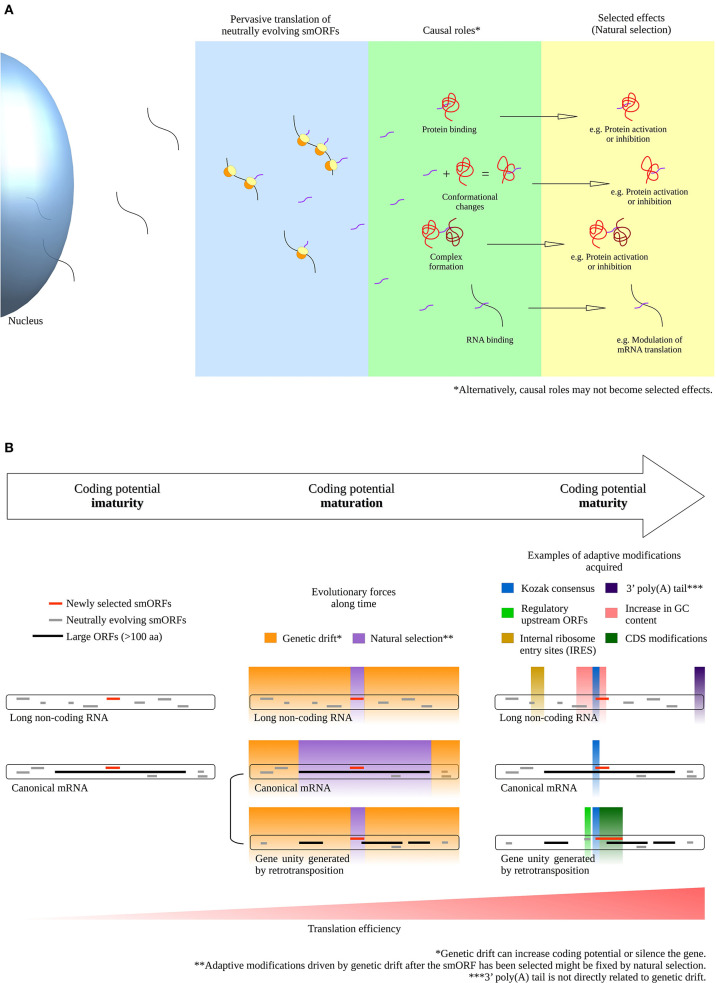Figure 1.
Phenotype selection and coding potential maturation of smORF transcripts. (A) Transition of smORF peptides from “causal roles” to “selected effects” after pervasive translation events. Pervasive translation of neutrally evolving smORFs possibly advances proteome evolution by exposing neutral phenotypes to natural selection under environmental pressure. (B) Scheme for coding potential maturation, a hypothetical mechanism that increase the translation efficiency of a mRNA after a smORF has been selected for (selected effect) in a transcript with suboptimal coding features. On the left, coding potential immaturity; in the middle, coding potential maturation; on the right, coding potential maturity. During the coding potential immaturity phase, newly selected smORFs are observed in transcripts with suboptimal coding features, either in long non-coding RNAs or as alternative smORFs in canonical mRNAs. Although canonical mRNAs exhibit optimal coding features, alternative smORFs are usually secondarily or pervasively translated; thus, some alternative smORFs may reside in suboptimal coding regions. During the coding potential maturation phase, natural selection and genetic drift may act in different parts of a transcript. While natural selection acts by fixing the selected parts, genetic drift acts by changing the non-coding parts of a transcript, as postulated by the nearly neutral theory (Ohta, 2002). Natural selection promotes fine-tuned adjustments to the selected phenotypes, such as synonymous mutations and CDS modifications. Genetic drift can establish adaptive mutations in a transcript by evolving sequences that potentially increase smORF translation, such as the Kozak consensus, regulatory upstream ORFs, internal ribosome entry sites (IRES) and increases in GC content. Additionally, other adaptive modifications not directly related to sequence mutations in transcripts might increase smORF expression, such as the 5′ cap, 3′ poly(A) tail, cis-regulatory elements in the genome and, in the case of alternative smORFs, independent gene unit generation by retrotransposition. Importantly, the acquisition of optimal coding features might be favored after the smORF has been selected for, because modifications driven by genetic drift could be fixed by natural selection if they improve the translation efficiency of the newly selected smORF. Before the smORF has been selected for, eventual optimal coding features acquired could rapidly disappear during genetic drift evolution without fixation. Alternatively, mutations evolved by genetic drift can silence the gene. Finally, smORFs reach the coding potential maturity phase when optimal coding features are acquired and translation efficiency increases. Consequently, the translation rate of smORF peptides is largely increased upon completion of the described process, contributing to the establishment of molecular innovations and protein coding gene birth.

